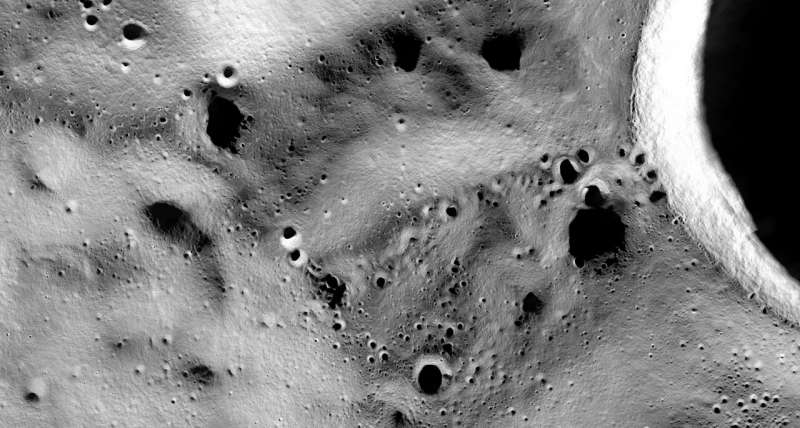The Moon is about to get crowded. NASA recently announced a landing site for Intuitive Machines’ Nova C lander near Shackleton Crater in the Moon’s south pole region. The lander will carry NASA’s Polar Resources Ice-Mining Experiment (PRIME 1) mission, scheduled to launch in late 2022.
The location is on the “Shackleton connecting ridge,” which connects De Gerlache and Shackleton crater. The site was chosen based on maps of potential water-ice detections created by NASA’s Lunar Prospector in the 1990s. The Lunar Crater Observation Sensing Satellite (LCROSS) impactor mission and India’s Chandrayaan 1 orbiter provided additional data.
The solar-powered lander and its payloads will complete a 10-day mission thanks to the south pole’s location. It also allows access to permanently shadowed craters and direct communication with Earth. Since the craters may contain water-ice deposits, connectivity is critical.
“PRIME-1 is permanently attached to Intuitive Machines’ Nova-C lander, and finding a landing location where we might discover ice within three feet of the surface was challenging,” says Jackie Quinn (NASA-KSC) in a recent press release. “We needed to find a ‘Goldilocks’ site that gets just enough sunlight to meet mission requirements while also being a safe place to land with good Earth communications.”

The Nova C lander will carry three payloads, one of which is PRIME 1. The Regolith Ice Drill for Exploring New Terrain comprises a spectrometer and a lunar regolith drill (Trident). Trident is designed to collect lunar regolith and deposit it on the surface for analysis by the Mass Spectrometer Observing Lunar Operations instrument (MSolo).
“While there is plenty of sunlight to power the payloads, the surface gets too warm to sustain ice within reach of the PRIME-1 drill,” she added. “We needed to find a ‘goldilocks’ site that gets just enough sunlight to meet mission requirements while also being a safe place to land with good Earth communications.”

The lander will also be equipped with a small rover that will travel a mile away from the lander to demonstrate Nokia Labs’ remote 4G/LTE communications network. In addition, it will also serve as a proof-of-concept for a powerful system that astronauts could use to transmit high-definition video in real-time from the lunar surface in the future.
The lander’s final payload is the Micro-Nova. This mini-vehicle will scout permanently shadowed areas while carrying a payload of up to one kilogram, venturing out 2.4 kilometers from the landing site using thrusters.
The first profound lunar exploration begins in 2022. Nine countries have planned 15 lunar missions. As a result, lunar exploration should be exciting in the coming years.


